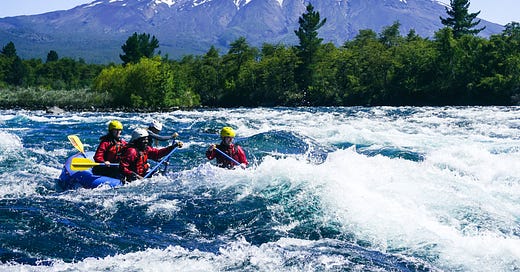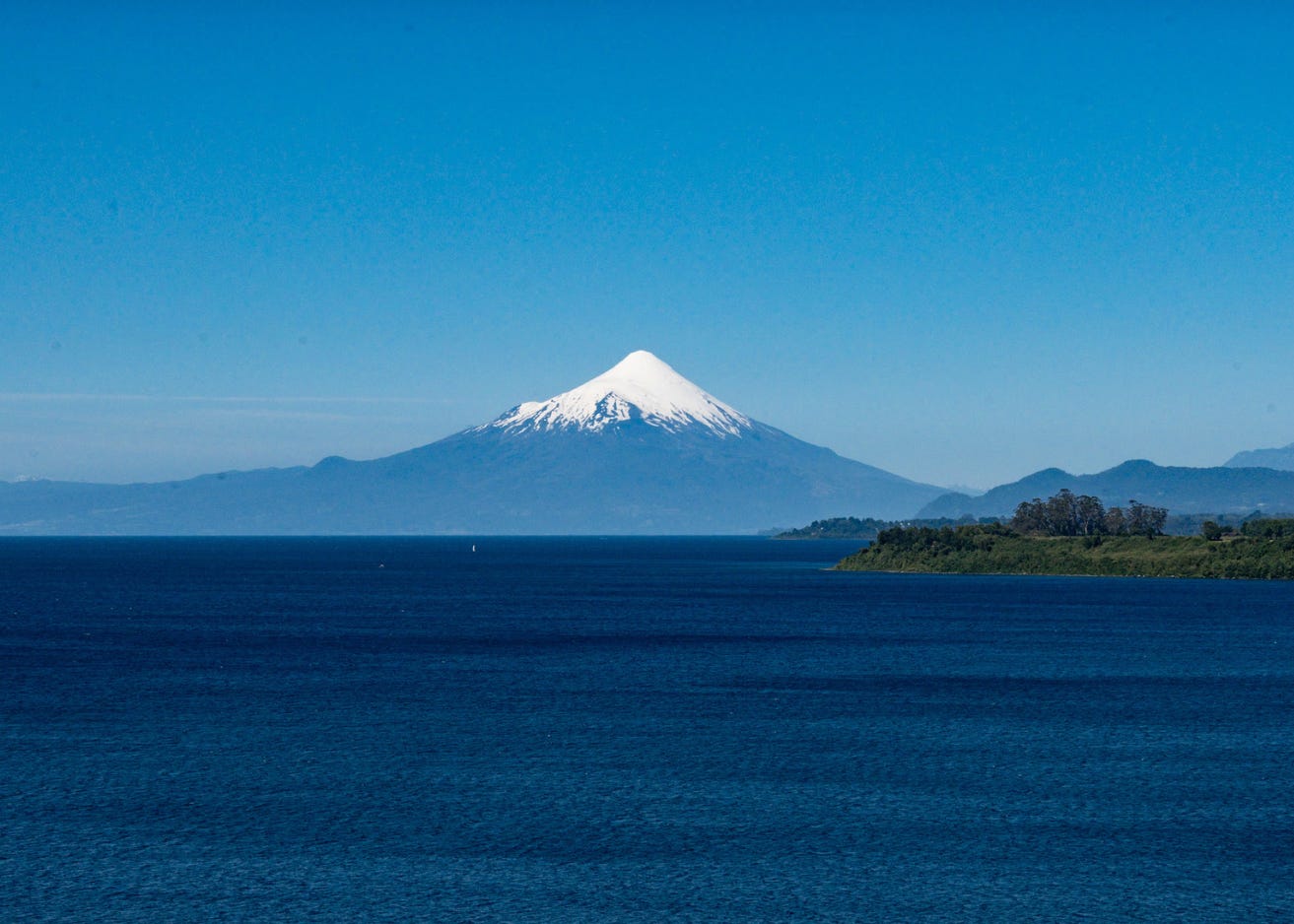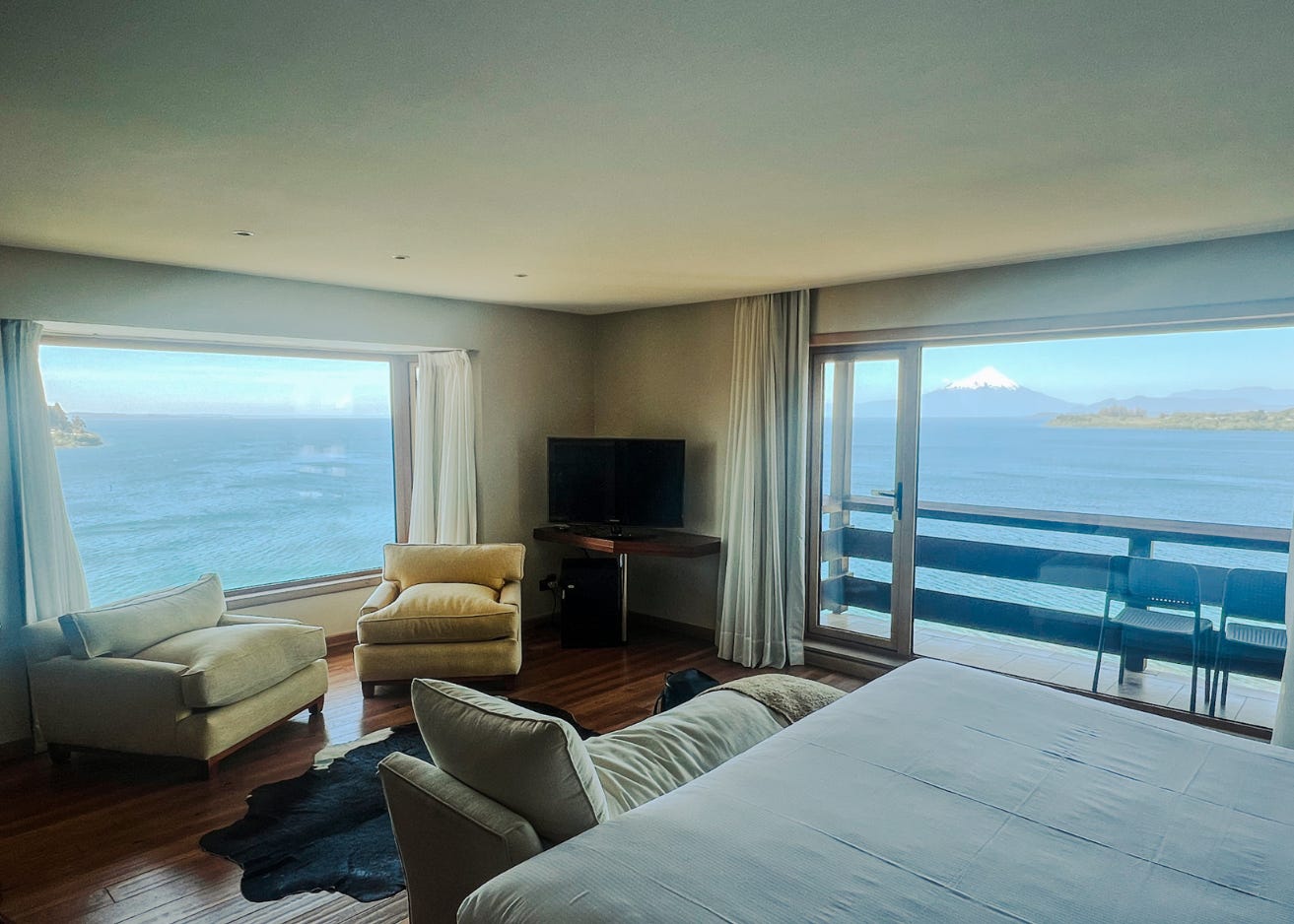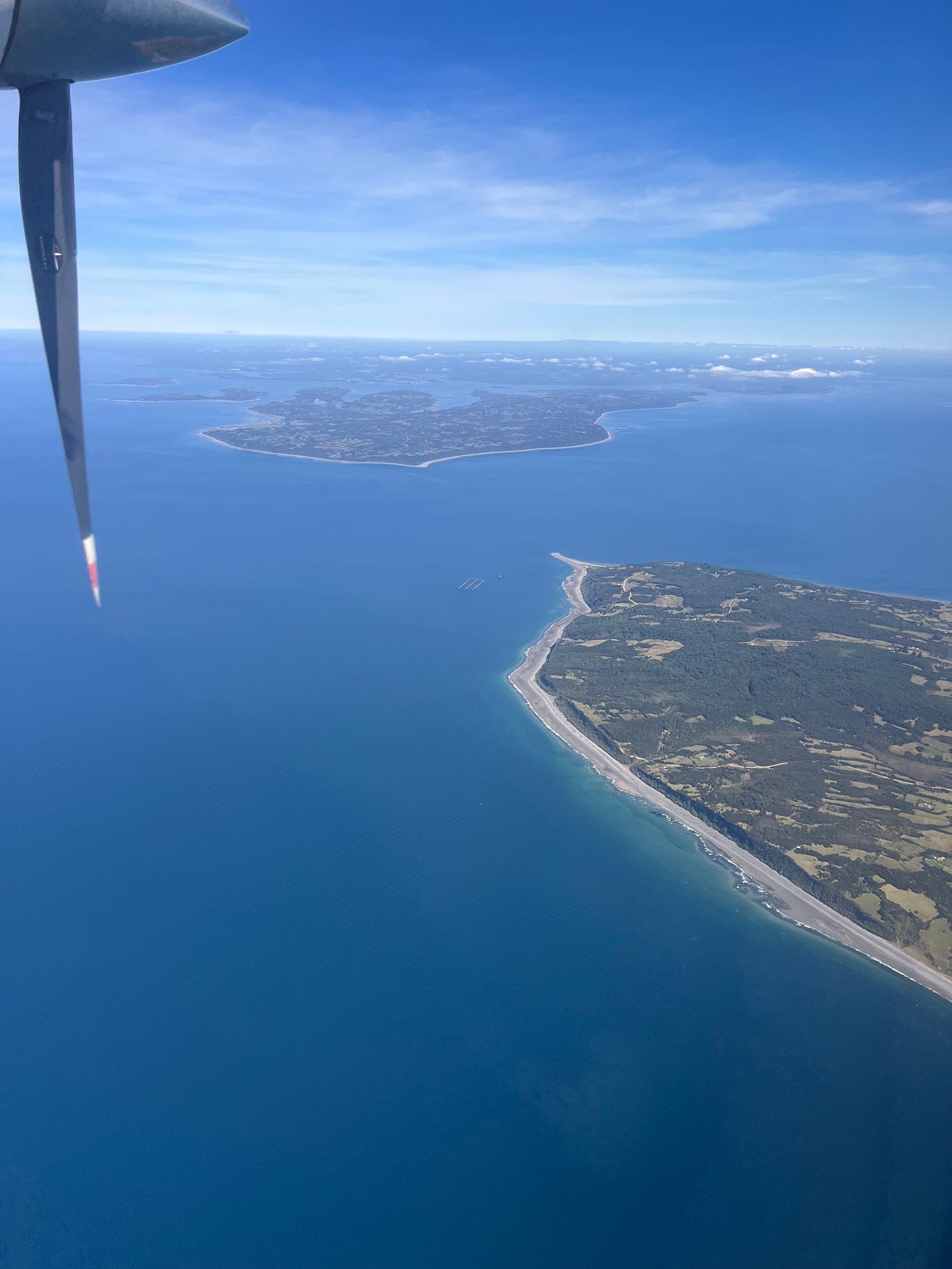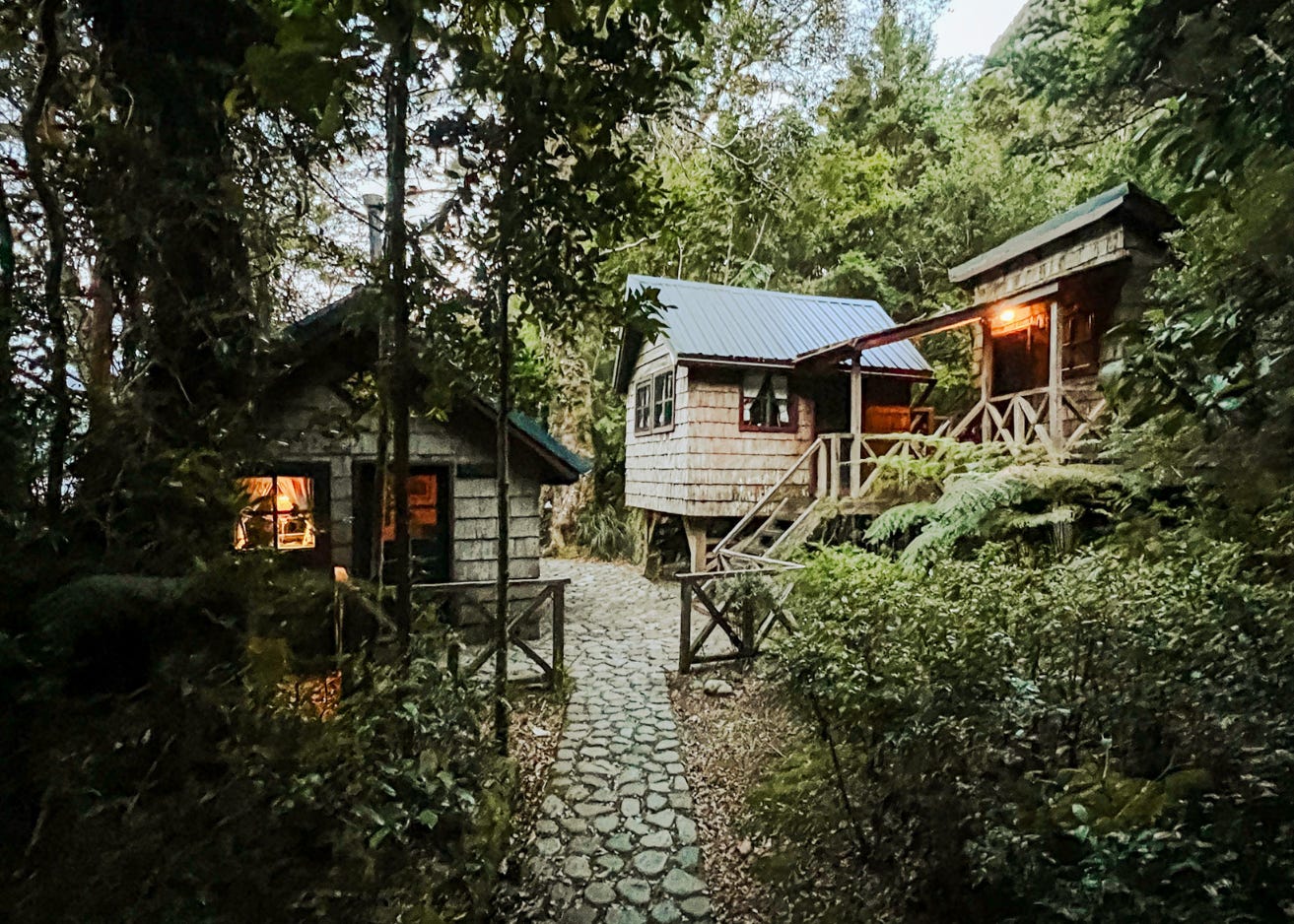As I write this, I am sitting in the Puerto Montt airport on Friday, December 29th waiting at my gate. Ryan and I missed our flight (first time in my life!) so now we have a few hours to catch up on life before we head to Santiago for the final leg of our Chile trip.
I wasn’t originally planning a recap of my Chile trip, mostly because I didn’t know if people would care about a play-by-play? But I’ve learned so many fun facts that I figure everyone will get something out of this!
Ryan and I had actually planned a whole trip to New Zealand for our honeymoon, but the flights ended up being far beyond what we could afford ($3000-$4000 a person). After watching a documentary called “Wild Life” about Kris and Doug Tompkins, we decided on Chile. The documentary focuses on conservation efforts spearheaded by Kris and Doug to protect a chunk of Patagonia from deforestation and expanding farming. Doug, the co-founder of North Face, and Kris, the former CEO of Patagonia, dedicated their lives to buying up land in Chile and gifting it back to the government as national parks. It was a heroic and tumultuous effort. Highly recommend the documentary!
I tell this story because when most people think of Patagonia they think of the clothing brand or Torres Del Paine, the most popular tourist destination in Patagonia. Because that’s all we knew about Patagonia, Ryan and I began planning a trip to Torres Del Paine. And it is beautiful down there; it’s mountainous with stunning glaciers and alpine lakes. But as we did more research it became clear that Torres Del Paine was becoming too crowded and overpriced. It is the quintessential Patagonia trip, but perhaps not the only place to see incredible sights. After watching “Wild Life” which focused on two national parks in central Patagonia, we decided to head to Pumalin National Park. The views looked spectacular and it was very much off the beaten path of tourists (more on this later).
With this new plan in mind, we started planning… or I should say, Ryan started planning. I had planned a majority of the wedding, so it felt appropriate to have Ryan take the lead on planning our Chile trip. He did it uncomplainingly, and with more than half of the trip under our belt, flawlessly.
We left Washington, D.C. on Friday, December 22nd, flying through Miami to Santiago. After a layover in Santiago, we landed in Puerto Montt. Three flights, and over 25 hours of travel. The first leg of the trip was in Puerto Varas, a beautiful quaint German-inspired town on a large lake.
Some Puerto Varas history & facts: The city was founded in 1853 by German immigrants as part of a government colonization effort by the Chilean president at the time. Puerto Varas is on the shore of Llanquihue Lake, the second largest lake in Chile, and sits across the lake from the Osorno Volcano.
Volcanos are a huge part of Chile’s history and geography. There are over 3,000 volcanos in Chile, but only 85 are active. Volcanic eruptions have colored Chile’s landscape and impacted the biodiversity. The Osorno Volcano is considered active, but has not erupted in more than a century.
Ryan booked us a beautiful hotel overlooking the lake. We were placed in the “Lakeview Suite” which gave us ample room to spread out (aka four FULL rooms).
Our time in Puerto Varas included a wonderful white water rafting trip down the Petrohue River and lots of walking around town. Ryan was totally smitten with Puerto Varas, repeatedly asking when we could come back.
A surprise for me was Chile’s affluence. I didn’t know that Chile had the second largest economy in South America or that Chile leads the region in globalization, income per capita, and economic freedom. However, income inequality in Chile is staggering. From the total national wealth in Chile in 2021, 80.4% belonged to the top 10%. This is compared to 69% belonging to the top 10% in the United States.
You can see Chile’s affluence in their monetary infrastructure (you could use credit cards everywhere) and their architecture. The new apartments and homes being built were stunning and modern. Our taste of Chile’s affluence ended in Puerto Varas as the next leg of the trip highlighted the economic inequity in different regions.
After leaving Puerto Varas, Ryan and I headed to a teeny tiny airport in Puerto Montt to fly down to Pumalin National Park. We flew on 17-seat plane down to El Chaiten, with stunning views of the Andes mountains on one side and the Pacific Ocean on the other.
We were picked up at the airport by our guide, Jota, who drove us an hour to Caleta Gonzalo, our home for the next few days. Here is a lovely summary of Pumalin from the Tompkins Conservation:
Temperate rainforest, fjords, expansive Pacific coastline, and the Andes Mountains converge in this iconic park at the northern end of the Carretera Austral. The park is a haven for the endangered alerce tree (Fitzroya cupressoides)—cousin to the giant sequoia—with 25 percent of the remaining population of these forest giants being protected in Pumalín. Thousands of waterfalls cascade down from glaciers and steep granite walls, and the Michinmahuida and Chaitén Volcanoes crown the landscape. Pumalín’s primeval forest harbors numerous species found only in this area, like the Pudú, one of the world’s smallest species of deer, and also stores vast amounts of carbon. Each year thousands of travelers from around the globe enjoy the park’s trails, campgrounds, cabins, viewpoints and other facilities, which provide opportunities to experience one of Earth’s largest temperate rainforests.
Pumalin has three main sections: Caleta Gonzalo, El Amarillo, and El Volcan. They are all pretty accessible by car, except for the absolutely brutal and unmaintained gravel section of Carretera Austral to Caleta Gonzalo.
Caleta Gonzalo is an adorable little paradise on the edge of a fjord. Ryan had booked us in a cabin called the Hobbit Village which took the name quite literally. Our guide comfortingly told us that there had been many puma sightings near our cabin as it was 10 minutes away from the main lodge and all other guest lodging. But the remoteness was nice and we ended up enjoying the 10 minute walk to and from the lodge.
Our stay in Pumalin included a brutal hike up the El Chaiten Volcano, a boat ride around the fjord, and exploration through a forest of alerce trees. Alerce trees are some of the oldest trees in the world; some researchers even say they are older than the giant sequoias. Alerce trees are a critical part of Patagonia’s economy and ecology. They are dramatically beautiful trees, rising far above the others. They also have incredibly strong and resilient wood that has created sustainable infrastructure for Chilean cities and towns.
Our stay at Caleta Gonzalo was wonderful. As we had hoped with choosing Pumalin over Torres Del Paine, the area was quiet and remote. The forests looked prehistoric, like a dinosaur would appear if you looked too hard. Unlike in the United States where much outdoor space is used for recreation (I’m not complaining!), Chile protects their parks at all costs. A significant part of Pumalin is literally untouched and preserved.
I quickly realized how cavalier it was for me to go to Chile without speaking any Spanish. I assumed that most people would know English. That was definitely not the case. Ryan and I had to learn Spanish on the fly and ended up in many awkward and confusing conversations because of our ignorance. But every Chilean person we interacted with has been nothing but kind and patient with us, many going more than out of their way to make sure we have a good time and feel taken care of.
The final leg of the trip took us to Santiago, the largest city in Chile and where the majority of Chileans live. This newsletter is getting aggressively long, so I’m going to leave you on the edge of your seat and add the Santiago debrief to the next one!
P.S. LAST CALL for book club sign-ups. This book club is for anyone who likes to read and enjoys friendship. The book club is free and virtual! You just have to procure the books on your own. Sign up here!

